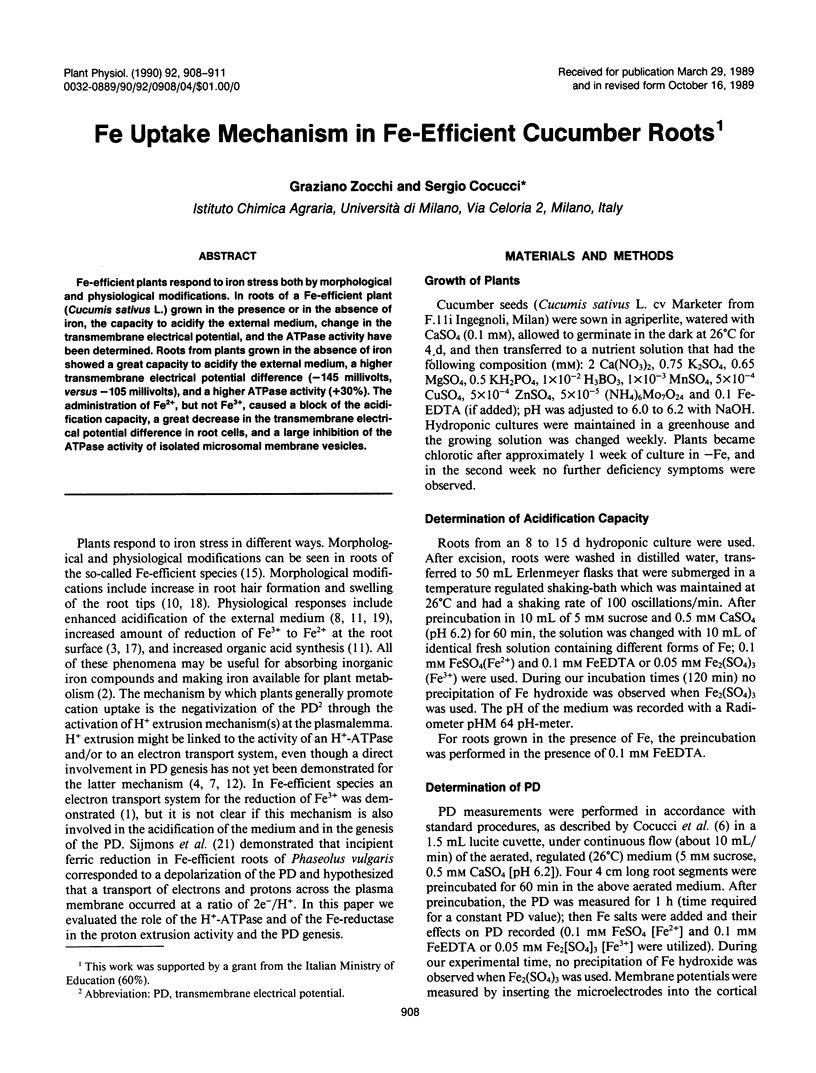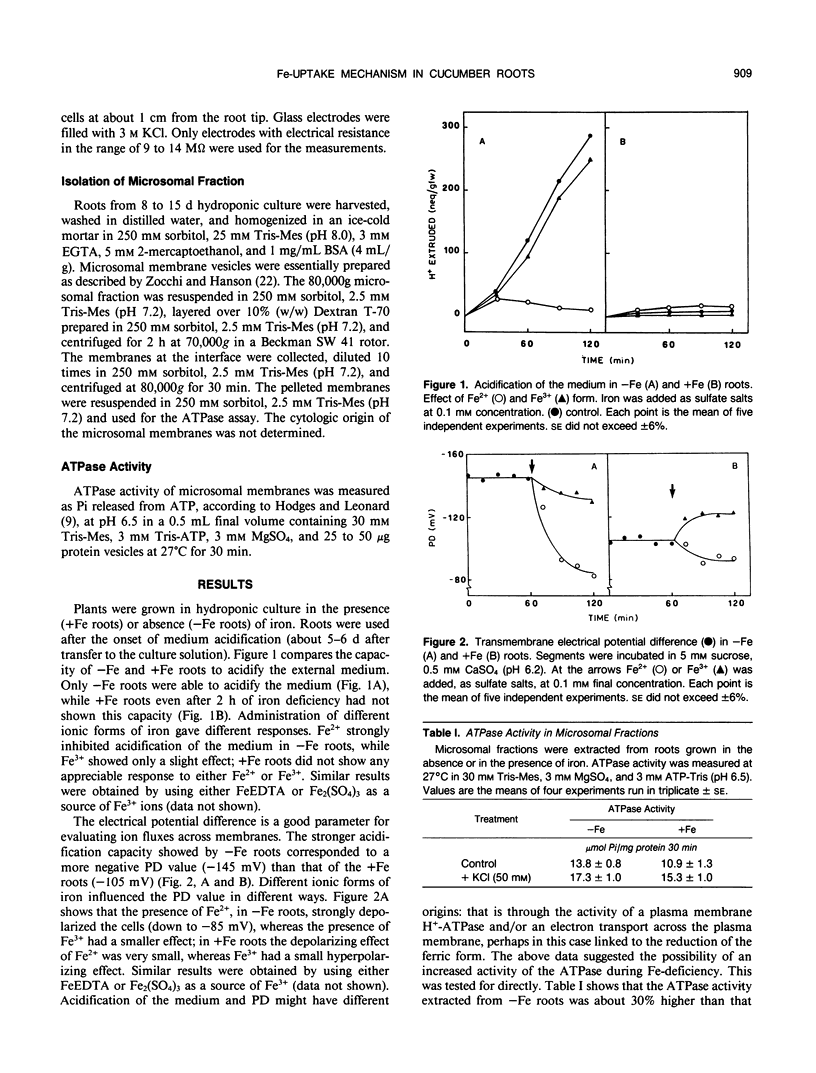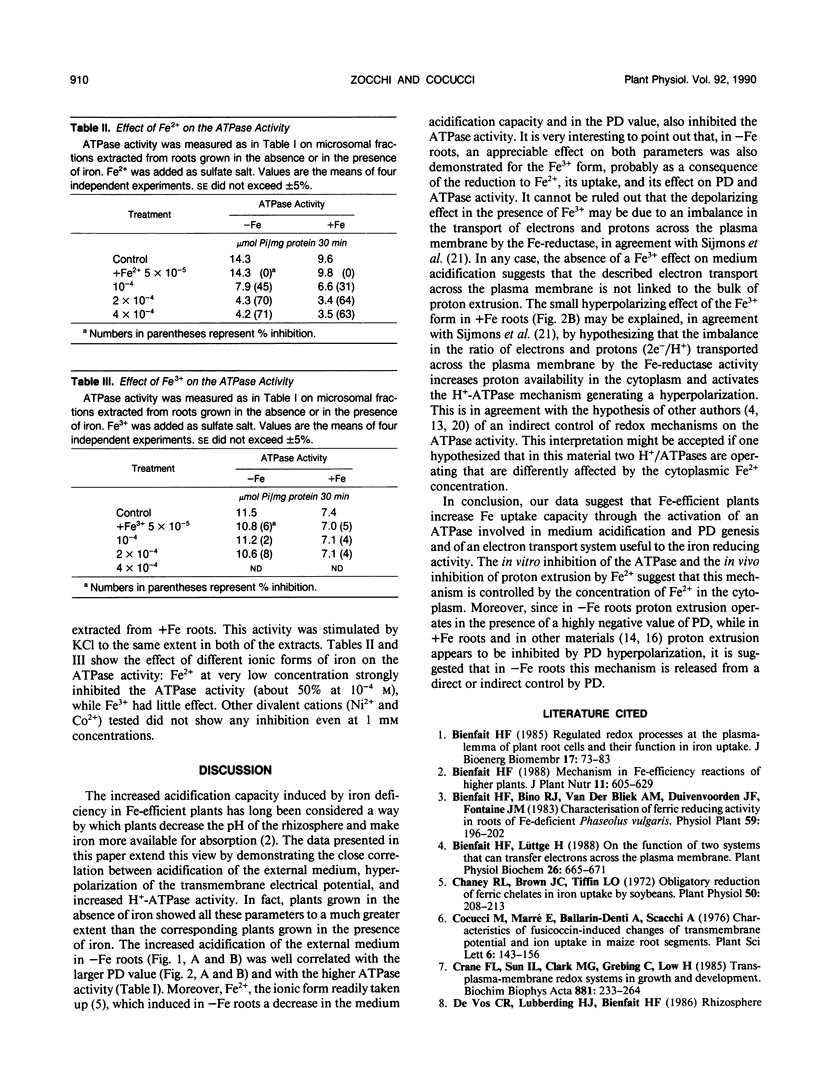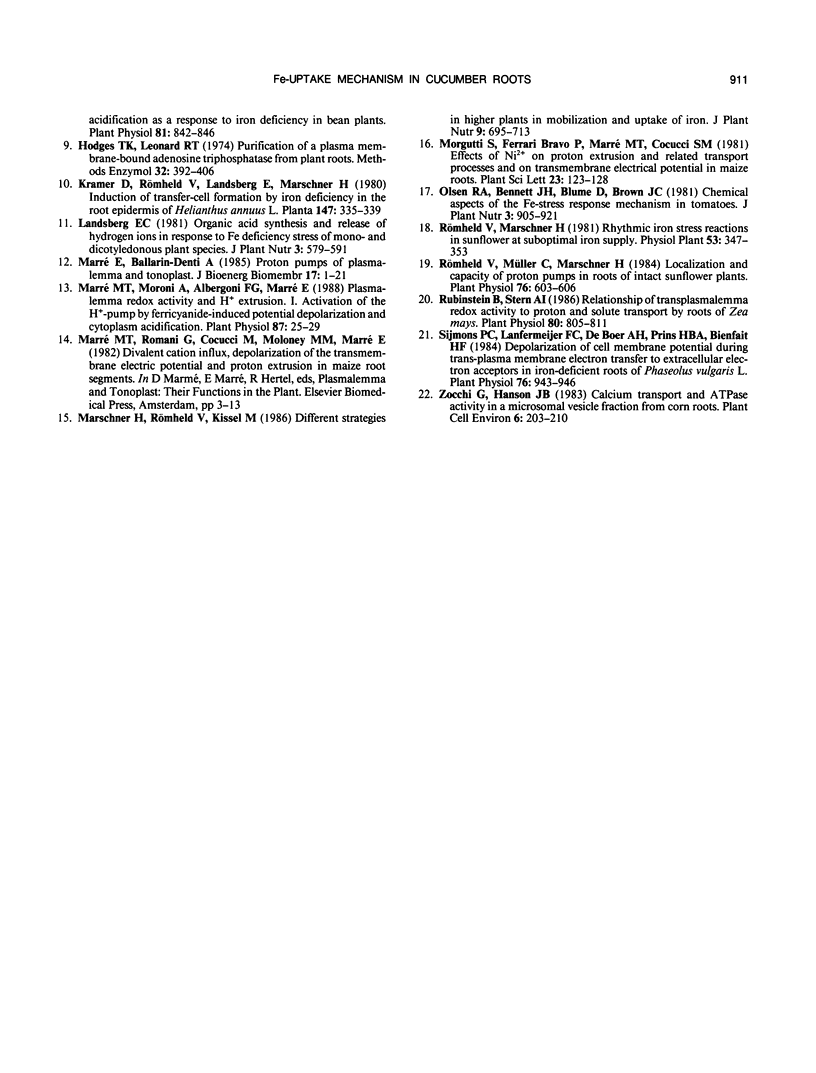Abstract
Fe-efficient plants respond to iron stress both by morphological and physiological modifications. In roots of a Fe-efficient plant (Cucumis sativus L.) grown in the presence or in the absence of iron, the capacity to acidify the external medium, change in the transmembrane electrical potential, and the ATPase activity have been determined. Roots from plants grown in the absence of iron showed a great capacity to acidify the external medium, a higher transmembrane electrical potential difference (−145 millivolts, versus −105 millivolts), and a higher ATPase activity (+30%). The administration of Fe2+, but not Fe3+, caused a block of the acidification capacity, a great decrease in the transmembrane electrical potential difference in root cells, and a large inhibition of the ATPase activity of isolated microsomal membrane vesicles.
Full text
PDF



Selected References
These references are in PubMed. This may not be the complete list of references from this article.
- Bienfait H. F. Regulated redox processes at the plasmalemma of plant root cells and their function in iron uptake. J Bioenerg Biomembr. 1985 Apr;17(2):73–83. doi: 10.1007/BF00744199. [DOI] [PubMed] [Google Scholar]
- Chaney R. L., Brown J. C., Tiffin L. O. Obligatory reduction of ferric chelates in iron uptake by soybeans. Plant Physiol. 1972 Aug;50(2):208–213. doi: 10.1104/pp.50.2.208. [DOI] [PMC free article] [PubMed] [Google Scholar]
- Crane F. L., Sun I. L., Clark M. G., Grebing C., Löw H. Transplasma-membrane redox systems in growth and development. Biochim Biophys Acta. 1985 Aug 1;811(3):233–264. doi: 10.1016/0304-4173(85)90013-8. [DOI] [PubMed] [Google Scholar]
- Hodges T. K., Leonard R. T. Purification of a plasma membrane-bound adenosine triphosphatase from plant roots. Methods Enzymol. 1974;32:392–406. doi: 10.1016/0076-6879(74)32039-3. [DOI] [PubMed] [Google Scholar]
- Marrè E., Ballarin-Denti A. The proton pumps of the plasmalemma and the tonoplast of higher plants. J Bioenerg Biomembr. 1985 Feb;17(1):1–21. doi: 10.1007/BF00744985. [DOI] [PubMed] [Google Scholar]
- Marrè M. T., Moroni A., Albergoni F. G., Marrè E. Plasmalemma redox activity and h extrusion: I. Activation of the h-pump by ferricyanide-induced potential depolarization and cytoplasm acidification. Plant Physiol. 1988 May;87(1):25–29. doi: 10.1104/pp.87.1.25. [DOI] [PMC free article] [PubMed] [Google Scholar]
- Ramirez Cueto G., Manuel Septien J., Bravo Mosqueda, Garate Arrieta A. Manejo de las posiciones posteriores y transversas persistentes de occipucio. Ginecol Obstet Mex. 1968 Jan;23(135):123–128. [PubMed] [Google Scholar]
- Rubinstein B., Stern A. I. Relationship of Transplasmalemma Redox Activity to Proton and Solute Transport by Roots of Zea mays. Plant Physiol. 1986 Apr;80(4):805–811. doi: 10.1104/pp.80.4.805. [DOI] [PMC free article] [PubMed] [Google Scholar]
- Römheld V., Müller C., Marschner H. Localization and capacity of proton pumps in roots of intact sunflower plants. Plant Physiol. 1984 Nov;76(3):603–606. doi: 10.1104/pp.76.3.603. [DOI] [PMC free article] [PubMed] [Google Scholar]
- Sijmons P. C., Lanfermeijer F. C., de Boer A. H., Prins H. B., Bienfait H. F. Depolarization of Cell Membrane Potential during Trans-Plasma Membrane Electron Transfer to Extracellular Electron Acceptors in Iron-Deficient Roots of Phaseolus vulgaris L. Plant Physiol. 1984 Dec;76(4):943–946. doi: 10.1104/pp.76.4.943. [DOI] [PMC free article] [PubMed] [Google Scholar]
- de Vos C. R., Lubberding H. J., Bienfait H. F. Rhizosphere acidification as a response to iron deficiency in bean plants. Plant Physiol. 1986 Jul;81(3):842–846. doi: 10.1104/pp.81.3.842. [DOI] [PMC free article] [PubMed] [Google Scholar]


